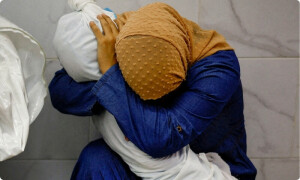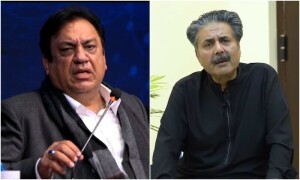In a room full of lady health workers (LHW) and government school teachers, a training session is underway at the Karachi Police Hospital. The purpose – to train them in administering polio drops, recording results and working with parents who may refuse to get their children vaccinated or children who are not present.
Success of the three-day nationwide polio drive, which was launched on Monday, relies on these women and other polio vaccinators like them. The awareness campaign has been launched, teams have been selected, and now much is pinned on how they carry out their work to ensure that the implementation is sound.
Rigid criteria In accordance with the National Emergency Action Plan for Polio Eradication 2012 (NEAP), following is the criteria for selecting vaccinators: women over the age of 18, who are local residents and government workers. This rigidity of the criteria, especially the condition of having female vaccinators, has created difficulties in team selection, according to Dr Naqi Bukhari – a World Health Organization (WHO) polio eradication officer for Saddar Town, Karachi.
Although the plan makes sense on paper, the on-ground reality is quite different. In Karachi’s Saddar Town, for example, there are 85 designated LHW’s carrying out vaccinations for a population that is well over 100,000 residents.
“Trying to work with these numbers has been a little tricky, although one solution was to bring in female government school teachers from near by union councils,” said Dr Bukhari.
“Having females on the team is essential as they often have to enter homes to administer drops,” explains Waheed Khan, who works with the Rotary polio campaign in the SITE area.
Roadblocks Despite having well-trained teams and a stable system in place, polio eradication officials still face problems in implementing their plan. According to the NEAP 2012 report, the failure to achieve goals in 2011 was due to “inadequate implementation of strategies in key areas.”
Rumours of ghost vaccination teams, mismanagement and corruption have been doing the rounds prior to the launch of the campaign. During the campaign, however, the teams will be focussed on meeting the stiff target set by NEAP – vaccinating 95 per cent of the children in each union council (UC).
While it may be easy to blame them, team members have complaints of their own.
One of the LHWs attending the training session complained about late payments. This, she said, affected the moral and attitude of the vaccinators.
Resistance from parents is one of the biggest problems that vaccinators, according to a polio worker from Karachi’s UC-9. The number of households resisting vaccination for their children has, however, dropped down to 130 from over 1,000 in UC-9.
Majority of polio cases reported in Pakistan have been from Pashto-speaking families, with PolioInfo putting the figure at 77 per cent of all cases.
Organisations working for polio eradication, including WHO, Unicef and Rotary, have collected close to 20 fatwas (religious ruling given by figure of authority) in a bid to remove misconceptions regarding polio vaccine and convince parents to allow the drops to be administered.
‘Missed children’ Religion and parental refusal are not the only hindrances faced in polio-eradication drives. “It is the lack of comprehensive coverage that leads to the figure of ‘missed children’ – children based in areas that were out of reach for the vaccinators,” said the Chief Field Coordinator for Rotary International Masood Ahmed Bhalli.
According to the NEAP statistics for 2011, the number of polio patients increased in Balochistan and Sindh, while Fata and Khyber-Pakhtunkhwa saw a 30-per-cent decrease. The report identified Quetta, Killa Abdullah and Pishin in Balochistan (all areas bordering Afghanistan) and Karachi in Sindh as high-risk areas. It was Balochistan, in particular, where transmission was high. Additionally, in cases where the virus was recorded outside the aforementioned areas, almost 70 per cent originated in Sindh or Balochistan and the virus was also exported to Afghanistan and China.
“Administrative control is a problem in Balochistan,” Bhalli said, adding that in Sindh, the situation is bad because people don’t complete their assignments.
“It is a Herculean task and needs complete commitment.”
The three districts of Karachi (Gadap, Baldia and SITE), which are high-risk areas are also areas with large migrant population comprising people from flood-affected regions to internally displaced people from Fata and other conflict zones. Strong campaigning is needed in these areas, as is mentioned the NEAP report.
“Sewerage samples collected in all parts of the city in a recent environmental study, which came back positive for carrying the poliomyelitis virus, thus the immunisation of children is vital in Karachi,” said Bhalli.
While the world looks at Pakistan in 2012, seven cases of polio have already been recorded in the country and as the polio drive enters its third day, 35 million children await the drops, making the goal of eradicating the disease by this December a tough one.
The author is Multimedia Editor at Dawn.com.












































